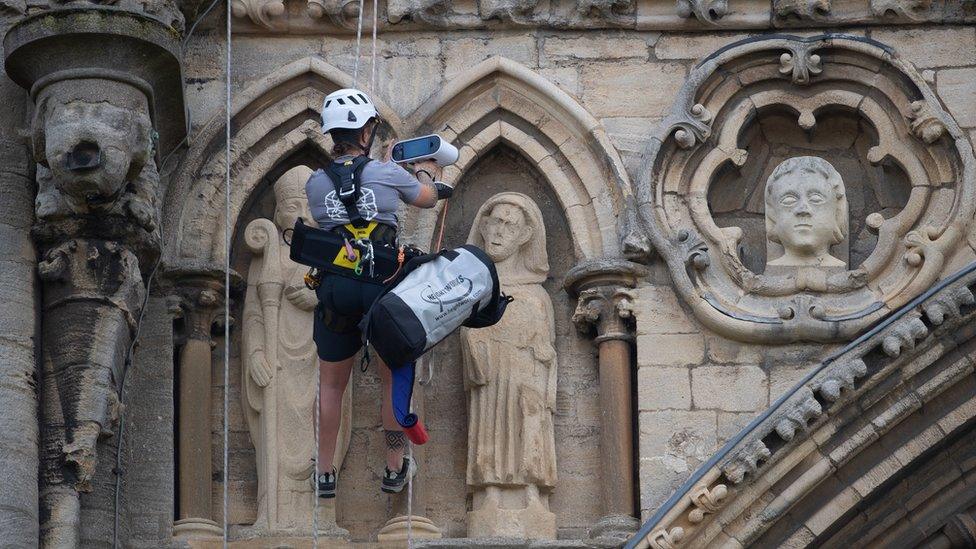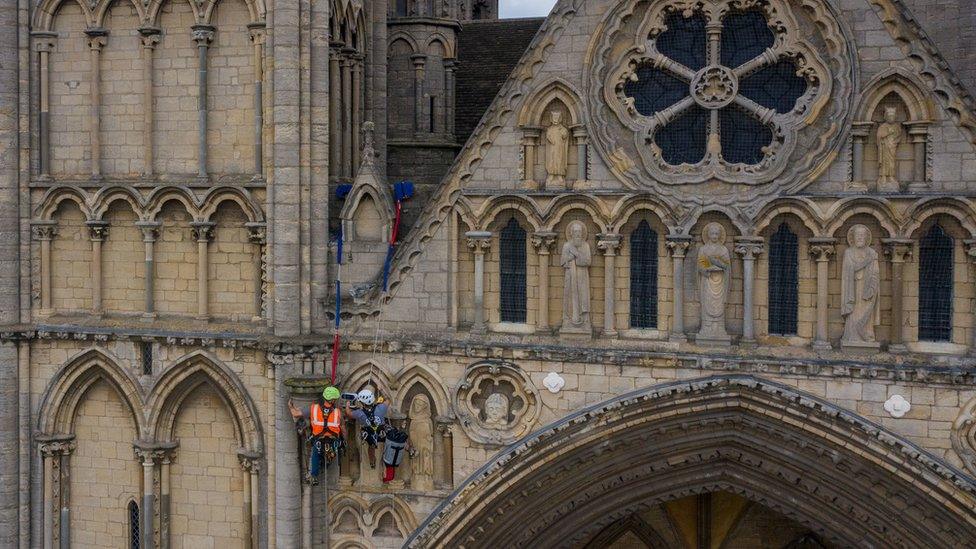Team abseils Peterborough Cathedral to make 'digital twin'
- Published

Five people abseiled the building and collected 16 billion data points
Conservationists have abseiled Peterborough Cathedral with handheld scanners to create a "digital twin" of the 12th Century building.
Five people descended the Norman church to identify where repairs are needed.
The team took more than 30,000 images, which is believed to make the cathedral the most digitally recorded historical building in the world.
Technical director Graham Sykes said if the building fell down tomorrow it could "pretty much" be rebuilt.
Mr Sykes, of Architectural Heritage & Scanning, said the team collected 16 billion data points from the cathedral.
"Similar work has been carried out at Notre Dame and at Westminster Abbey but this is not quite so in-depth as we have used a wider range of scanners and methods to capture different levels of detail," he said.

The team scaled the building on Monday to record its detailed carvings
Mr Sykes said the project was a "unique case study" to see what could be achieved and added the team have created a "digital twin" of the cathedral.
"It really creates a perfect snapshot of the building as it is now, so if it fell down tomorrow it pretty much could be rebuilt with the data we've got to a high degree of accuracy," he said.

Workers also used a drone as part of the project.
Peterborough Cathedral was chosen for its architectural structure and its size.
Commercial director of the cathedral Dave Cramp said he hoped the data collected could be used as a learning resource for schoolchildren.
"We are already working on ideas for how we can use these very lifelike images and fly-through videos in materials for schools, enabling our education team to visit classrooms and inspire students with a fascination for the life and history of this ancient building," he said.
"The potential for virtual tours, increased accessibility and bespoke objects for sale in our shop is also very exciting."
The team hopes to complete the scanning of the cathedral by the end of summer.
- Published9 August 2020

- Published17 September 2019

- Published4 September 2019
